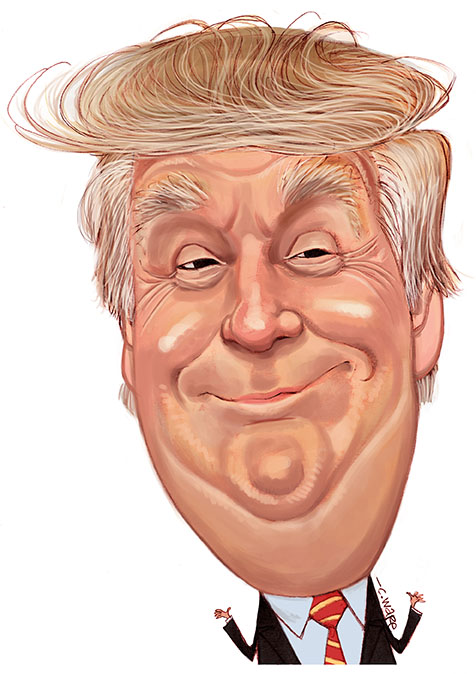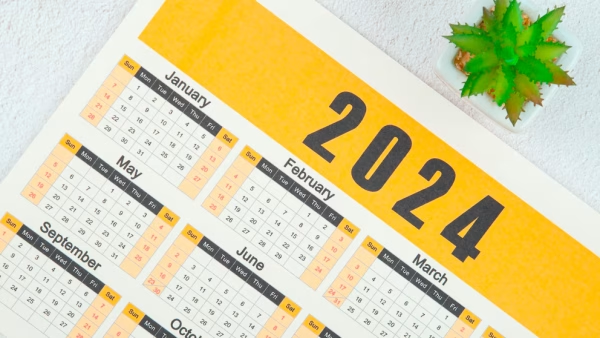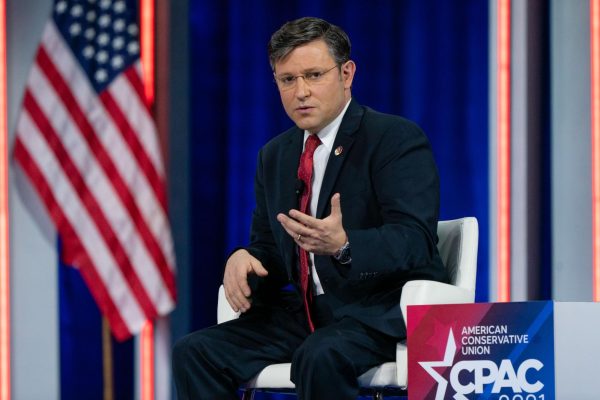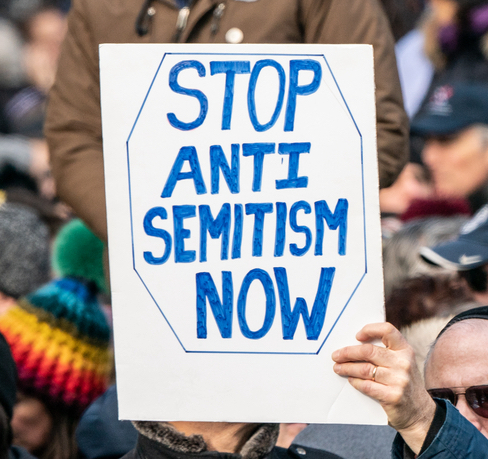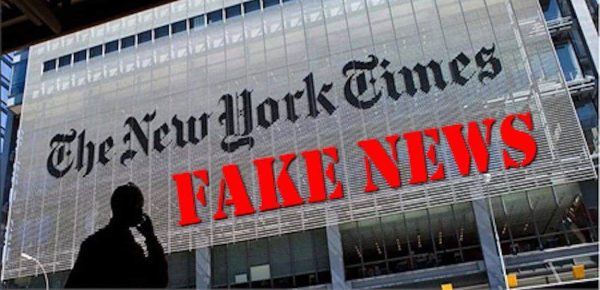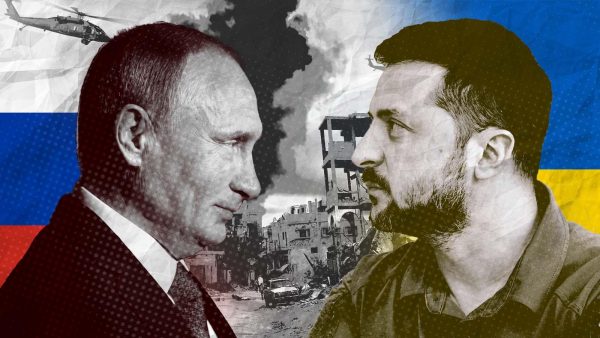Opinion: Election Polling Needs a Revolution
Chris Ware (TNS)
Before the sun rose on November 9th, 2016, Donald Trump was elected president of the United States of America. It was a victory that shocked millions across the globe for many reasons, including his uncoordinated debate performance, the video documenting his boasts about sexual harassment, and racist attitudes. Ultimately, these led many to despise Trump and reject the idea that an individual with such low moral character could achieve the presidency.
What made Mr. Trump’s win especially shocking, however, were misleading predictions of the polls. For months leading up to the election, almost every poll and forecast projected that Hillary Clinton would win the White House. Thousands of her supporters gathered in Philadelphia on November 7th at her final rally, elated because Mrs. Clinton’s consistent lead in the polls made them confident that she would win.
What went wrong, then? How did the forecasts fail to predict Trump’s victory? There are a variety of reasons, but it is also important to understand that the polls, at least on a national level, were not dramatically incorrect. Most polls put Mrs. Clinton’s lead within the margin of error, and she did win the popular vote by nearly 3 million votes.
The methodology of election polls presents an interesting irony: they predict the future by looking at the past. In other words, many pollsters construct their model of the electorate based on voter turnout from previous elections, trusting that voting demographics will remain more or less the same. But 2016 was no ordinary election.
Mr. Trump’s victory exposed the flaws in this approach, demonstrating that the unique circumstances of each individual election really can change the electorate, and that its composition does not depend upon the patterns of the past. Given this revelation, we must rethink the way in which the polls are carried out in order to predict more accurately elections to come.
The most surprising element of Trump’s victory, and the core polling error of 2016, is where he won. Not only did the majority of swing states hand him their electoral votes, but also states like Pennsylvania and Michigan, which had before 2016 supported Democratic candidates for nearly 30 years. The polls gave us no reason to believe these states would go to Trump.
The most plausible explanation for pollsters’ blindness to these states’ turn is that the aforementioned unusual characteristics of this election interfered with pollsters’ models of the electorate, underrepresenting significant voter demographics in the polls.
More Americans voted for Hillary Clinton than for any other losing presidential candidate in history. It is difficult to equate an electoral loss coupled with such a massive popular win. The polls’ error was in underestimating the number of people who would turn out to vote for Trump, as well as which states he would win.
The failure to predict Trump’s victories in swing states like Florida and North Carolina was not surprising since such states switched between leaning blue and leaning red almost daily. There were near-equal chances of both states swinging either way. Furthermore, 14 percent of voters nationally reported that they decided upon the candidate for whom they would vote in the last week before the election.
Such a large percentage has the potential to bias the polls towards a certain candidate by a substantial margin. It is difficult for any poll to predict with certainty what percentage of citizens will decide at the last minute, let alone how they will vote.
The polling failures with the most impact occurred in Pennsylvania, Michigan, and Wisconsin. Trump managed to win these states by small margins: 68,941; 11,612; and 22,748 votes, respectively. However, these victories are still remarkable because not one of them has cast its electoral votes for a Republican candidate since 1992, and because polls consistently showed Mrs. Clinton in the lead.
In Michigan, the Huffington Post model had her leading greater than 99 percent of the time from July 2015 to October 2016. A RealClear Politics average of polls in Wisconsin had Clinton leading by 6.5 points. Nate Silver’s FiveThirtyEight forecast, known for its correct prediction of President Obama’s reelection in 2012 despite close polls, put Clinton’s chances of winning Pennsylvania at 77 percent. Without their combined 46 electoral votes (16 for Michigan, 10 for Wisconsin, 20 for Pennsylvania), Trump would have lost the election.
Trump’s victories in these historically Democratic states demonstrate the shift in voter turnout from the past election to this one. National voter turnout was not low; an estimated 58 percent of eligible voters went to the polls on Election Day, almost exactly the same as in 2012.
The difference in 2016 was who turned out to vote.
Wayne County, Michigan (the home of Detroit) is a historically blue region; one that Clinton did win. However, nearly 40,000 fewer of Wayne County residents voted last year than in 2012. Had even a third of those non-voters turned out to support Clinton, she would have overcome Trump’s 11,000-vote lead and won the state.
Many rural counties, on the other hand, saw increases in voter turnout. Political science professor Robert Alexander of Ohio Northern University explains: “You saw turnout spike in more rural counties… If you take a look at a lot of the larger cities, you did see depressed turnout there. It certainly was more consequential for Hillary Clinton than it was for Trump.”
Kent County, in southwestern Michigan, saw nearly 70 percent of its registered voters come to the polls. That’s over 17,000 more people than in 2012. Kent is one of the 75 Michigan counties that Trump won. Clinton only won 8, compared to Barack Obama’s 46 in 2008 and 20 in 2012.
A theme of the campaign season, within both major parties was attraction to presidential candidates seen as outsiders whose irregular ideas or personalities brought hope for change in Washington. Both Bernie Sanders and Trump were charismatic figures, unafraid to voice their radical opinions. They challenged the traditional definition of how a presidential candidate should think and act, which excited voters.
In particular, Trump galvanized a large population of non-college-educated whites, often referred to as the “white working class.” According to a recent CNN poll, 56 percent of that community does not feel the government represents their interests, and two thirds “say they are dissatisfied with the influence people like them have on politics.”
It is not hard to understand why—disasters like the water contamination crisis in Flint, Michigan do nothing to build faith in the government’s concern for rural communities. This distrust towards government likely accounted for low voter turnout in rural areas in previous presidential elections because such suspicion did not distinguish between Republicans and Democrats; both candidates were seen as equally untrustworthy “career politicians” (a term often used to criticize Clinton) no matter their party.
Much of the white working class saw Trump as different, and he is different; he will be the first U.S. president in history not to have served in any public or military office prior to his presidency. Through his stark departure from traditional political behavior, Trump brewed a hope among the disenfranchised white working class; a hope that they could finally have a president who would represent their needs.
Such widespread distrust of government supports the theory that many non-college-educated whites refused to participate in polling because they perceive that polls are part of government and, by association, are rigged.
As David Lauter of the Los Angeles Times wrote, “Trump voters were notably less comfortable about telling a telephone pollster about their vote.”
One might think that such a sizeable population being underrepresented in the polls would have disrupted the polls long before 2016. However, this has not been the case simply because not much of the white working class has voted in recent elections. 2016 shattered that fragile correlation. A larger percentage of that community turned out to vote than in past years, meaning a significant portion of Trump voters were not represented in the polls.
Analysts suspect that two other demographics within the Trump voter pool slipped past pollsters during the campaign, especially during the final weeks: late deciders and so-called “Shy Trumpers,” a catchy moniker for those who preferred not to express their support for Trump.
Since Trump’s extreme positions on key issues, wild unpredictability, and controversial behavior garnered him a bad reputation among both Democrats and moderate Republicans, people may have either not responded to polls or lied about their political positions during the campaign in fear of social scrutiny or embarrassment.
In addition to the “Shy Trumper” population, as well as other factors that likely biased the polls toward Clinton, numerous citizens decided which candidate they would support just before Election Day. Exit polls show that 12 percent of voters in Michigan reported they decided in the final week, most of whom voted for Trump. Some of that percentage, like the “Shy Trumpers,” may have either not responded or reported that they supported a different candidate when approached by pollsters.
Many supporters of Bernie Sanders were upset about their candidate’s loss, igniting controversy that fostered a negative view of Clinton among many Democrats. During the primary, Sanders won states like Michigan by dominating rural areas—just like Trump. Both candidates appealed to working-class voters by presenting themselves as outsiders determined to combat corruption in politics and better the lives of disenfranchised communities.
Trump won the same areas that Sanders won in the primary, meaning many Sanders supporters are part of those same communities that voted for Trump. By association, Sanders supporters likely contributed to both the “Shy Trumper” and late decider demographics. Considering the staunchly liberal positions of their defeated candidate, many Sanders supporters who preferred Trump over Clinton were likely wary to admit their support for the controversial Republican candidate to others, let alone to pollsters.
Even more probable is that a significant number of rural Sanders supporters belonged to the 14 percent of voters that decided for whom they would vote in the last week before the election, especially considering the increased distrust surrounding Mrs. Clinton at that time due to former FBI director James Comey’s abrupt re-opening of the case of her private email server.
The underrepresentation of the white working class in the 2016 polls illuminates a flaw in pollsters’ approach to that community: because many rural communities have not had such high voter turnout in past elections, many pollsters did not reach out to the citizens in those rural counties.
In their defense, the strategy makes sense; when trying to predict the outcome of a presidential election, one does not want to risk an incorrect result by including in his or her forecast those not likely to vote. However, it would be untrue to say that statistics of who did and did not vote in past elections were the only data pollsters had available to construct their model of the electorate.
It was common knowledge that this election was unlike any before it; not only were the candidates unusual, but the electorate as well. All one had to do was to take a drive through the countryside; it would be difficult not to see the lengthy rows of Trump/Pence yard signs driven into the grass outside home after home. Trump started a movement, and it seems pollsters did not notice, or at least neglected to factor the change into their forecasts.
On the “User Guide” page of his FiveThirtyEight election forecast, Nate Silver explains what elements of his approach changed for this election cycle: “Not that much!” he writes. “It’s mostly the same model as the one we used to successfully forecast the 2008 and 2012 elections.”
While Mr. Silver does not conduct polls himself (rather, he collects, adjusts, and averages all the polls to determine each candidate’s chances of winning) his explanation reflects what appears to have been the general attitude of the polling industry last year; that despite the widely recognized irregularity of the 2016’s race compared to past elections, there was no need to adjust their approach.
Despite the excitement Trump stirred up among the so-called white working class, pollsters did not increase that group’s representation in their models of the electorate from past elections when voter turnout among that demographic had been lower. Another trend pollsters did not factor into their models was the fact that Mrs. Clinton was not well regarded among much of the American people, including members of her own party.
Indeed, Clinton was one of the most disliked presidential candidates in recent history; her “strongly unfavorable” rating rested near 37 percent. Obama’s never went above 30 percent.
A critical lesson that the polling industry must take away from the errors in this election is that the unique circumstances of each election matter just as much as, if not more than, historical context and the results of prior elections. The shifts in voter turnout from 2012 to 2016 were significant enough to change the composition of the electorate, something that very few pollsters saw coming.
The question one expects a poll to answer is simple: who will win? If the majority of polls predict the answer incorrectly, it puts the entire profession at risk. The average citizen does not care about the degree of failure. At first glance, all he or she knows is that the polls were wrong. Thus, in order for the polling industry to regain credibility, pollsters must reevaluate the methodology of their profession.
They must learn to take a more scientific and modern approach to polling; most polls still rely on calling landlines, to which fewer people respond now than before the mobile phone boom. The University of Southern California Dornsife/Los Angeles Times Presidential Election Poll pioneered a new method of polling in which they revisited a group of the same 3,019 people throughout the election cycle, creating a baseline more dependable than the randomized approach employed by most other polls.
Their systematic methodology also includes polling questions that are more numerous and complex than most polls, allowing for precise adjustment of results that gives a more refined projection.
The USC-LA Times poll was one of only two major polls to predict Trump’s victory. This approach was still flawed, however; they predicted he would win the popular vote. They may have been wrong on that front, but their approach is nonetheless a model for how the polling industry must move forward. As Election Day drew near, most polls converged on the same prediction—that Clinton would win.
USC did not. They remained confident in their novel methodology and held firm. We need to see more of this in the rest of the industry; ditching the methods of the past in favor of exploring better ways to analyze campaigns. It will take a while to discover the right approach; some are bound not to get it right the first few times, as USC demonstrated with its incorrect popular vote prediction. But the end result, a smarter polling methodology for the modern world, is worth the effort.
The failure of the polling industry in 2016 is just one peculiarity of this election that signal a need to reevaluate the institutions of our nation. The Electoral College, which for the fifth time in US history did not align with the popular vote, is a stain on American democracy, and by failing to prevent Donald Trump’s rise to power, it proved incapable of serving its intended purpose.
Donald Trump illuminated the problems facing disenfranchised whites, and he showed us how those issues make them vulnerable to exploitation by politicians whose conservative policies will only hurt those communities.
Bernie Sanders demonstrated the need for the Democratic Party to distance itself from the corporate world and fully commit to the needs of the American people. In essence, pollsters’ mistakes in 2016 are one of many windows into a government that needs to be fixed.
For this and more great articles by columnist Duncan O. Glew, visit his blog, State of the Glewnion: A Political Journal by Duncan Glew.


